Can eggplants and peppers be planted nearby?
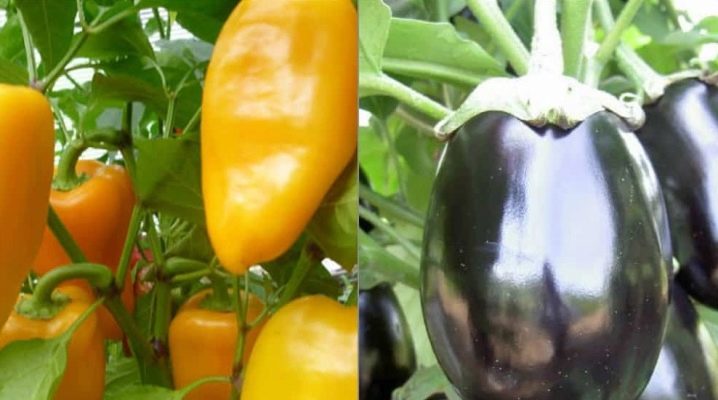
Crop compatibility in the same greenhouse or garden can be critical to their safety and viability. It is not surprising that the question of whether it is possible to plant eggplants and peppers together arises among many summer residents who want to rationally use the free space available to them. The planting scheme of these plants nearby and the nuances of caring for them deserve special attention.
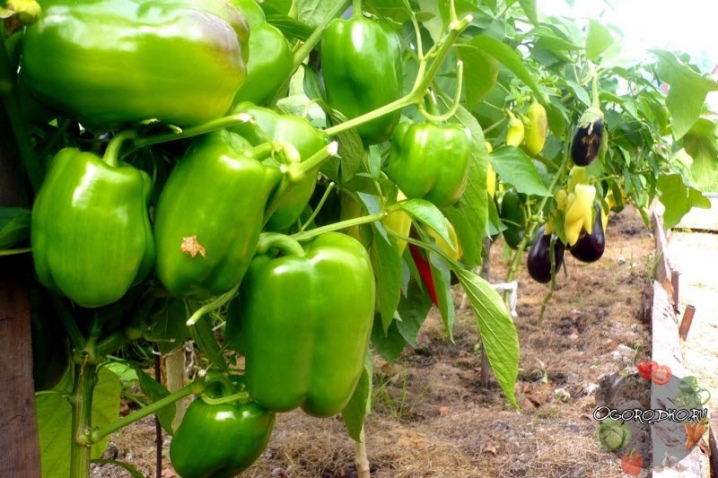
Cultural compatibility
When deciding whether it is possible to plant peppers next to eggplants, many summer residents have justified doubts. In fact, these crops quite successfully survive such a neighborhood in the same greenhouse or in a garden bed, in the open field. Eggplant can be planted with bell peppers for the following reasons:
- it has a similar length of the growing season;
- gives seedlings of about the same height;
- has a similar need for heat;
- needs enough heat and light.
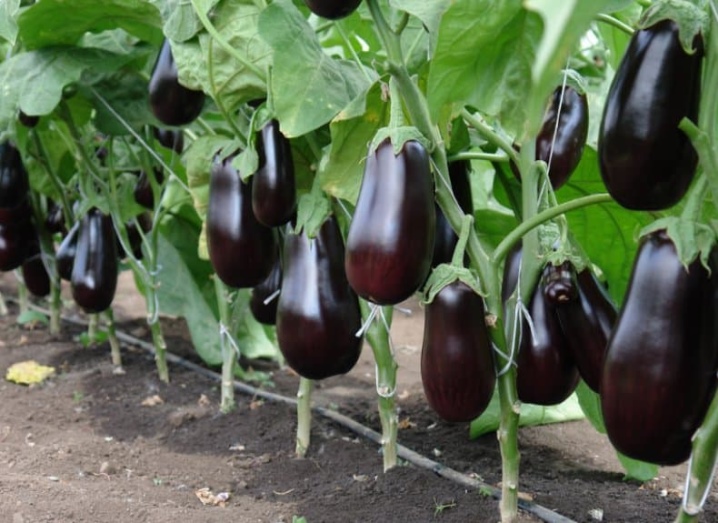
Considering the needs of eggplants and peppers, there are many overlaps. They have identical vegetation periods. In addition, plants thrive best in light and loose soils, generously flavored with organic matter. Vegetables can be sown in the greenhouse at the same time, approximately at the end of winter.
It is important to know: eggplant is only compatible with bell peppers. It is not planted with bitter varieties.
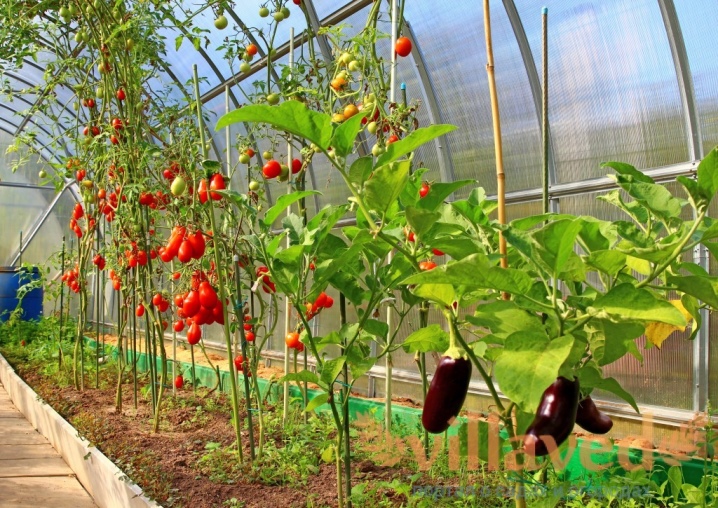
Landing features
The layout of different crops in the common space of a ridge or greenhouse is very important. Sowing in 2-3 ten days of February is possible for both peppers and eggplants. Seedlings must be placed under special lamps, since the duration of daylight hours at this stage is still quite small. The soil is taken wet, watering is carried out regularly: the plants are moisture-loving. When sowing directly in the greenhouse, after 14 days, the plants are fed for the first time, enriching the soil with nitrogen.
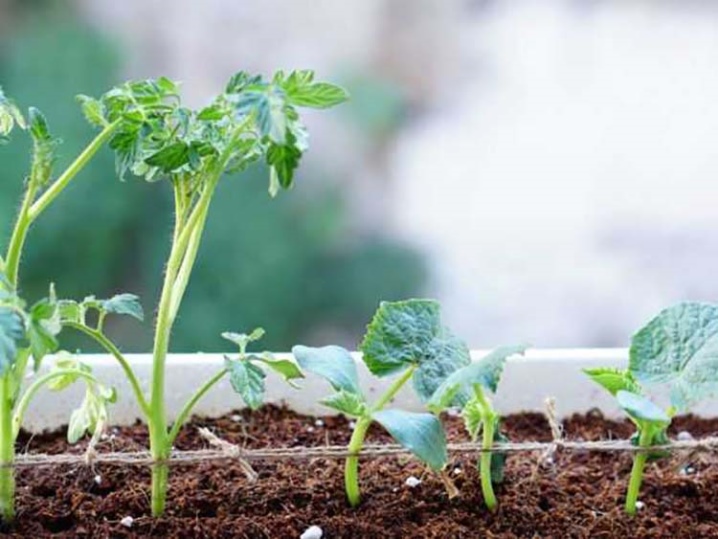
The planting process itself takes place according to the general scheme for both crops.
- Seed material is tested for germination. Empty seeds are sifted out.
- The material selected for planting is soaked. First, it is disinfected in a manganese solution. Then placed in one of the stimulating fluids. "Epin" and any of its analogues will do. The seeds are kept for 18 hours, then transferred to a container with warm water for a day.
- Quenching in a refrigerator or bubbling with air bubbles. This additional factor helps to stimulate the immunity of plants, helps to get strong and viable shoots on them.
- Sowing containers are thoroughly washed and steamed. They are filled with a loose and nutritious soil substrate. For both peppers and eggplants, a self-composed mixture of equal parts of humus and peat combined with sawdust or coarse sand is suitable. For greater nutritional value, the mixture is flavored with wood ash and phosphates.
- Disinfection. If a commercially available ready-made substrate is used, it will not be necessary. In other cases, the mixture is calcined in the oven. Then it is exposed to the open air to saturate the soil with oxygen.
- Landing. The seeds are arranged in rows with a distance of about 15 mm between them, sprinkled with a thin layer of earth. Sprinkle with warm water. Eggplants and peppers can be sown in a shared container.
- Waiting for shoots. The containers are covered with special materials: foil, agrofiber. Placed in a warm place open to sunlight. The airing of improvised mini-greenhouses is carried out daily, but so that they are not exposed to drafts.
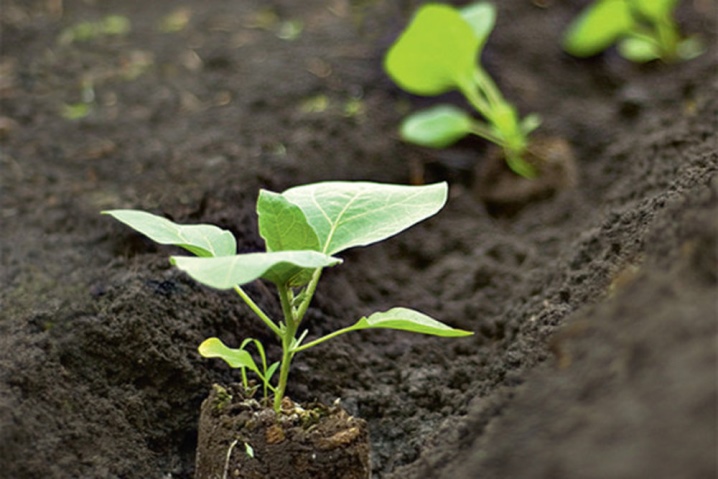
Planting in open ground, joint for peppers and eggplants, requires a distance of about 60 cm between them. This will be enough for the plants to receive adequate nutrition without interfering with each other. It is better to plant bushes of peppers and eggplants in squares. When breeding seedlings at home, they are first hardened.
To do this, containers or pots are briefly taken out to the balcony, veranda, gradually increasing the duration of such sessions.
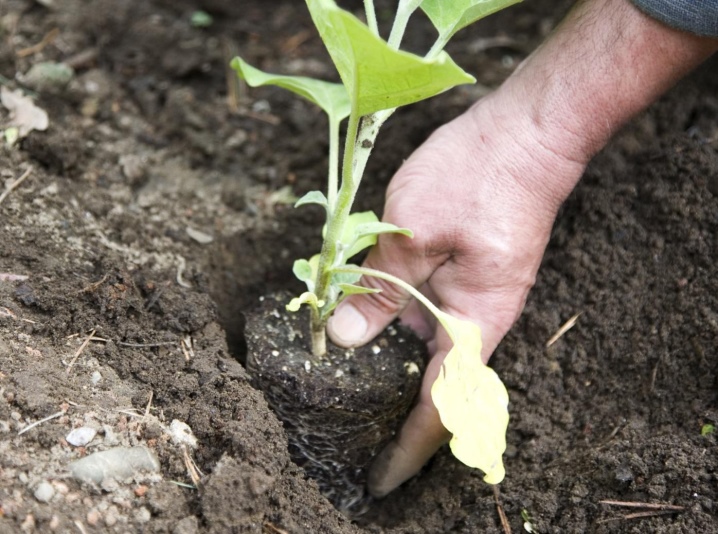
The nuances of care
After the first seedlings appear, the seedlings will need to be well cared for. Young green shoots do not like drafts, but they respond well to heat, an abundance of natural light. Seedlings are no longer hidden under the film, they are grown together until 3-4 true leaves appear. Then they dive, leaving the most viable plants. They are sent to individual containers.
Until they are sent to the ground or greenhouse, the main care for peppers and eggplants will be:
- maintaining soil moisture;
- loosening the soil in the root area to supply the roots with oxygen;
- creation of optimal light and humidity conditions;
- foliar dressing on the sheet;
- treatment with growth stimulants.

7 days before the transfer of the bushes to a new place, they are sprayed with a fungicidal preparation. A solution of Bordeaux liquid from 50 g of the finished substance and 10 liters of water is suitable. This will reduce the risks of subsequent infection of the plants with fungal infections. Peppers ready for transplanting will have a height of 15-20 cm, a strong sturdy stem, at least 10 leaves and flower ovaries. Roughly 70 days can be counted from the date of sowing.
Eggplants by this time will acquire 6 leaves. In early May, all plants are transferred from balconies and window sills to a permanent place. The procedure is performed in the evening hours, with preliminary filling of the hole with wood ash and humus.
It is important to take into account that with mixed plantings, the optimal scheme is 60x40 cm, or up to 6 pieces per 1 m2.
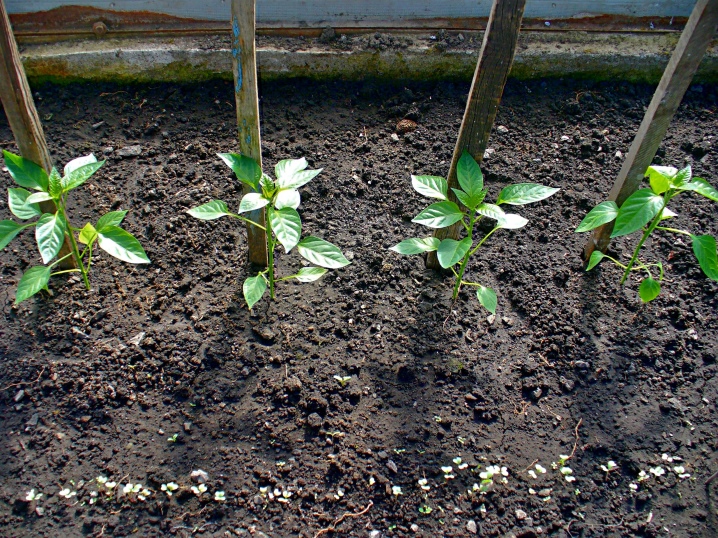
After that, it remains to provide the plants with frequent and abundant watering. Top dressing is carried out on the garden bed 5 times during the season. The first will be nitrogen, the rest will be potassium-phosphorus. Tall peppers will need to set up props. Eggplants need to be pinned when the time is right.
In the greenhouse, it is important to try to maintain the optimum temperature. Enough +27 degrees. Airing should not be neglected. It improves pollination, prevents the development of fungal infections.
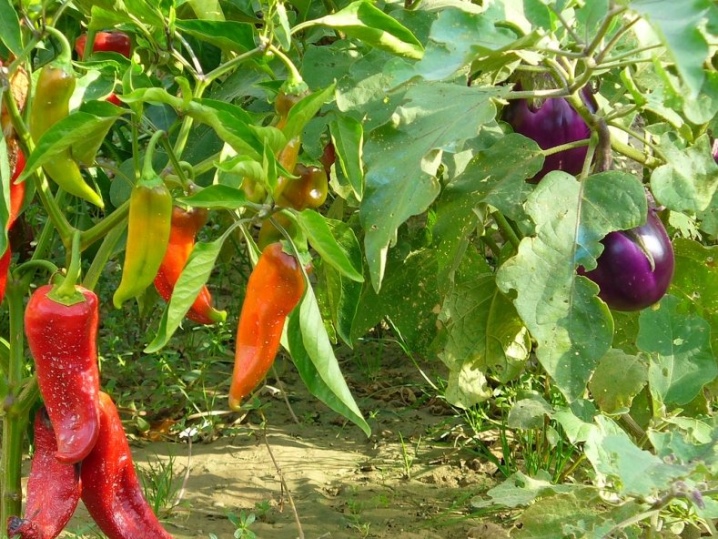













The comment was sent successfully.